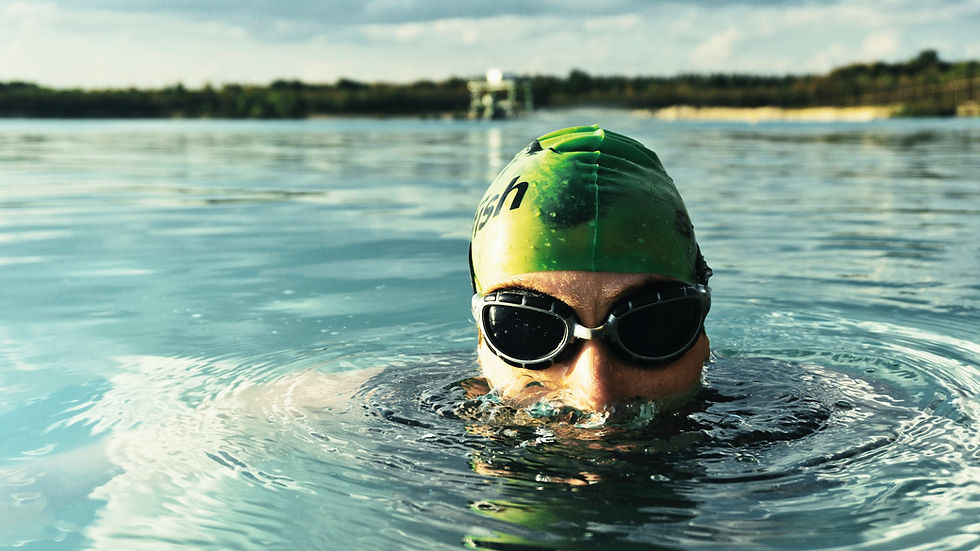Cold Water Swimming: A Safety Guide
- NOWCA

- Oct 31
- 7 min read
Cold water swimming is a fantastic Winter activity and growing in popularity. Read this safety guide before you embark on your cold water journey so you can enjoy the experience safely throughout the season.
VENUE
Cold water swimming is beneficial for health and wellbeing, but as with all things in life, the activity comes with some level of risk. You should never swim alone regardless of your experience or ability. A managed venue is a safe option for cold water swimming.
Choose a safe venue that has qualified lifeguards during cold water swim sessions.
You will also be able to get cold water swimming advice and guidance from the venue staff before and after your swim.
Attending a NOWCA affiliated venue means you get the extra benefit of our world-class tap-in, tap-out safety system which allows the safety crew to effectively manage the number of swimmers in and out of the water and monitor the safety of swimmers.
Some venues offer cold water swimming clubs where you can join other passionate swimmers and have a support system for your swim journey.
Make sure you speak to staff and lifeguards before you swim. Find out the water temperature, the course, and the venue facilities so there are no unexpected surprises.
EDUCATION
There is an abundannce of information available. However, be cautious and don’t rely on what you might read on social media or “advice” from well-meaning friends/swimmers. There are a lot of cold water swimming myths around.
Complete a cold water swimming induction course to ensure you are equipped with the necessary knowledge and skills for your swim.
Induction courses will introduce you to the key skills you need to stay safe in cold water such as preparing for cold water swimming, body reactions to cold water, how to warm up, cold water shock, and identifying the signs of hypothermia. Remember every swimmer and every swim is individual and induction courses will advise you how to keep safe before, during and after your swim.
NOWCA offer a range of courses specific to cold water swimming:
Test your knowledge, bust those cold water myths, and make sure you really know all you need to know be safe and enjoy your cold water swimming.
Free online
You can complete the NOWCA course online – get 70% off at NOWCA Perks.
Some NOWCA affiliated venues also offer cold water induction courses onsite so check with your nearest venue.
Some affiliated venues require NOWCA members to complete a cold water swimming induction (either online or at the venue) before you swim in water temperatures below 10C degrees.
Check the cold water swimming requirements for your local venue.
EQUIPMENT
It is always important to have the right equipment for any activity and cold water swimming is no different. These essential safety items will ensure you are visible to venue staff and other swimmers:
A tow float makes you visible to lifeguards and is highly recommended for all swimmers, especially those swimming without a wetsuit.
A brightly coloured swim cap so you are visible while in the water, it also preserves your body heat. Wear two silicone swim hats or a neoprene swim hat to help with this. For “head-up” breast strokers then wearing a wooly hat is acceptable…and fun!
NOWCA safety wristband if you have one, new members can collect one at their nominated venue on the first swim.
For extra safety, pack a whistle that you can wear around your wrist or wetsuit which will get attention if you need help in the water.
Make sure you pack these items as part of your cold water swim kit:
Your swimsuit, also known as swimming in ‘skins’.
A wetsuit if desired, but wear your swimsuit under the wetsuit. Although not mandatory, we recommend wetsuits to aid exposure to cold water. Many brands offer a thermal range specifically designed for cold water swimming. You can hire wetsuits at some venues so please check ACTiO or contact the venue.
A towel to dry off.
Dry changing robe. This not only helps you change discretely but also keeps you warm immediately after your swim.
Swimming goggles to protect your eyes if you plan to swim with your head under water. Bring a spare pair just in case! Ensure you anti-fog your goggles before your swim as a warm face in cold water will fog goggles quickly. Mask goggles can offer better vision.
Neoprene gloves and boots – these extra accessories can help keep the extremities warm while you swim. You can wear these even if don’t wear a wetsuit.
Weather appropriate, clean, dry clothing for after your swim. Lots of layers and items that are easy to put on are best. We recommended you bring a coat, woolly hat, socks, gloves and a scarf to help you keep warm after your swim.
Always bring a warm drink and a snack for energy. It is important to keep warm and refuel after a swim.
PREPARING FOR COLD WATER
We would recommend that you acclimatise yourself to cold water swimming:
If you are new to cold water swimming, we recommend you start in the summer when the water tends to be ‘warmer’ – the water temperature in the UK is generally considered cold all year round. Swim regularly to acclimitise yourself to the water.
Attend regular open water swim sessions through Autumn and Winter. This way your body will get used to the water temperature as it falls.
Have regular cold showers or baths – this will help you prepare your body for the temperature change.
Set a realistic and sensible cold water swim plan. It is important that you do not push yourself to the limits with the time you spend in cold water. The longer you’re in the cold the more dangerous it becomes as once you do leave the water, your body will continue to cool.
Speak to the venue staff, coaches or safety crew for advice and guidance. They are highly experienced with open water swimming, including cold water swimming. The qualified coaches and lifeguards can provide useful tips and help you better plan your swim expectations.
If you are swimming skins then make sure you know the water temperature and keep an eye on the time you spend in the water.
IN THE WATER
As the water temperature drops you should take these simple steps that are essential to staying safe in cold water:
Familiarise yourself with the venue’s safety rules and follow them at all times. They are there to keep everyone safe.
If it’s your first cold water swim then please tell the lifeguard on duty before you get into the water.
Using your NOWCA wristband, ensure you tap-in before you enter the water for your swim session. Venue staff will monitor swimmers to help reduce risk so everyone can enjoy each cold water swim.
Entry to your cold-water swim session should be via the steps or ramp. Everybody will experience cold water shock initially and you might feel disorientated. DO NOT jump or dive into the water – the shock of a quick entry into cold water can be very dangerous.
Use the breathing techniques you’ve learnt through your open water swimming coaching and experiences – deep, slow and steady breaths will help you acclimatise to the water.
Decrease the length of time you would normally spend in the water and adjust the distance you swim. Know your body. Know your limits. Don’t stay in too long. Always get out knowing you could do more rather than stay in too long and have a bad experience.
Stay aware and recognise the signs of risk within yourself before someone else. Be wary that if you stay in for an extra few minutes over what feels comfortable, your body can start to confuse you by sending signals of elation and warmth that aren’t really there. This is when the situation can become critical.
If you need help while in the water, stay calm and raise your hand or blow your whistle to get the attention of staff or other swimmers. The safety crew will come to assist you. You can float on your back if you are tired.
Be kind and courteous to one another. NOWCA welcome all swim abilities and we are all at different points in our cold water swim journey.
AFTER YOUR SWIM
After your cold water swim, the aim is to bring your core temperature up to normal (37C degrees) and to preserve it. On exiting the water, we recommend that you warm up slowly:
Using your NOWCA safety wristband, you must tap-out after you exit the water (before you leave the venue).
Your body temperature will continue to drop after you get out of the water so it is important to dry off after your swim and change into clean, dry clothing as swiftly as possible.
If you have cold, shivering hands, don’t be shy to ask for help – especially with buttons and zippers!
To help keep warm, put on extra layers such as a coat, woolly hat, socks, gloves and a scarf.
Consume a warm drink and a snack to refuel your body.
Allow your body to warm up naturally. Avoid taking a hot shower/bath immediately after your swim as this may make your core temperature to drop faster and lower.
Give yourself time to warm up before you drive.
Rinse your swim kit with cold water when you get home to clean it off and prevent musty smells. This also minimises biological transfer between different swimming sites and helps to keep your swim kit in good condition and lasting longer.
STAY SAFE & GET HELP
Ensure your NOWCA account details are up to date at all times, including medical and emergency contact details.
Avoid false or misinformation online, contact the professionals.
For medical guidance, contact your GP or pharmacist for advice.
For open water guidance, visit our website or contact your local NOWCA affiliated venue.




Comments